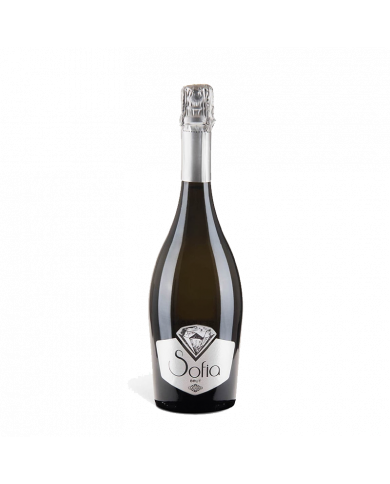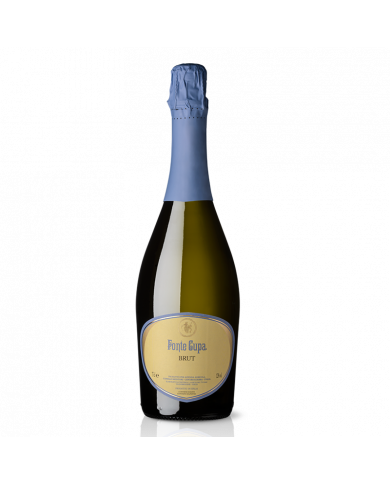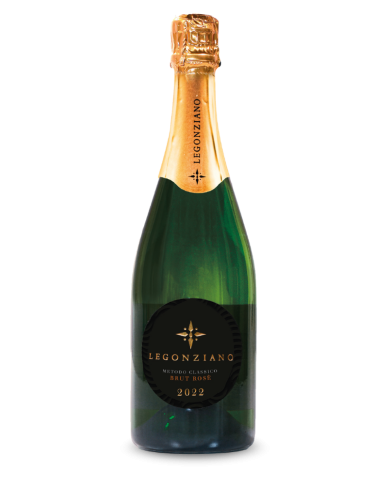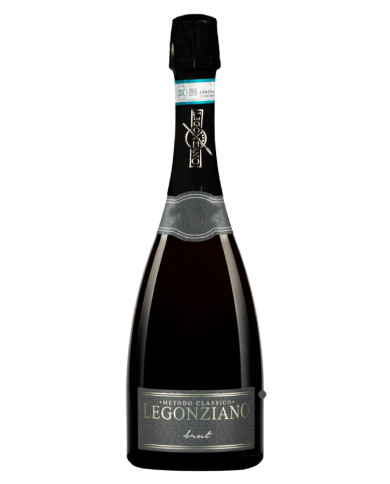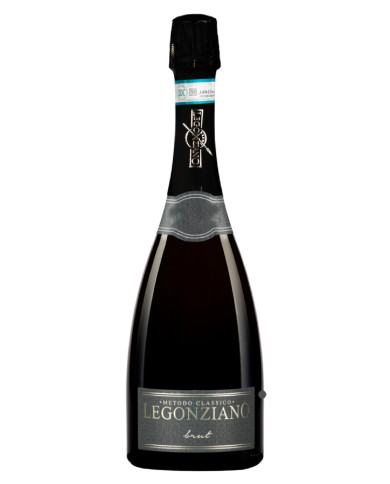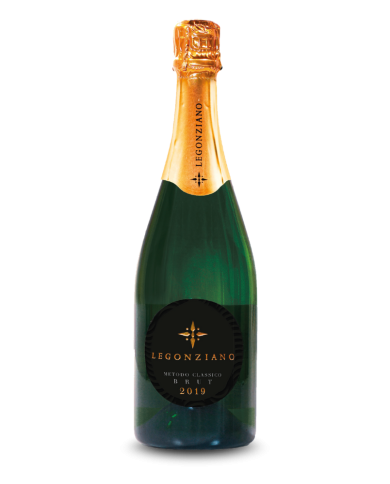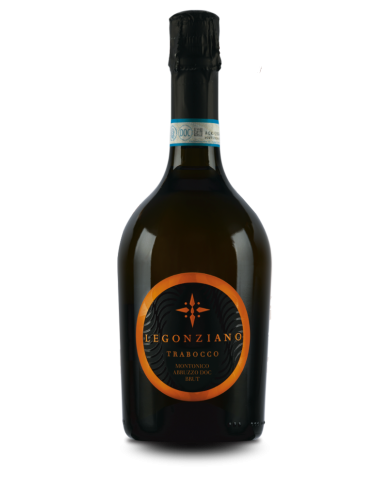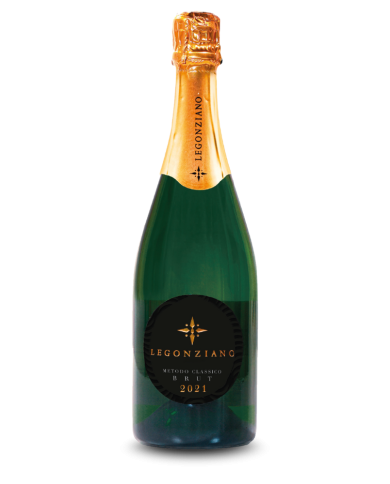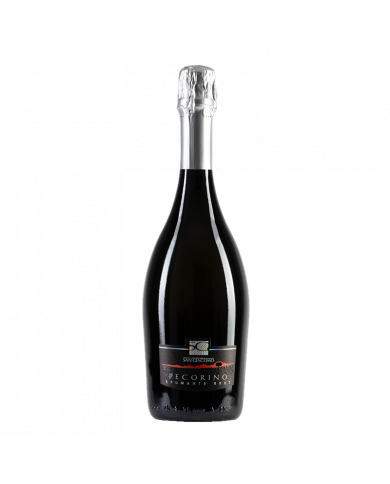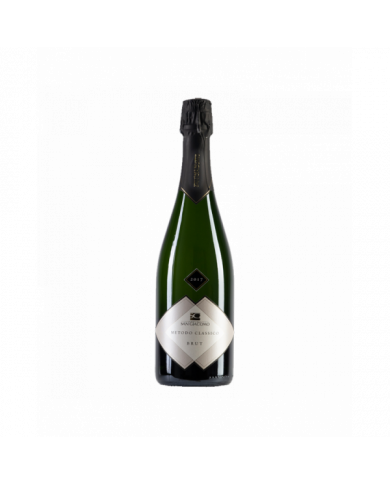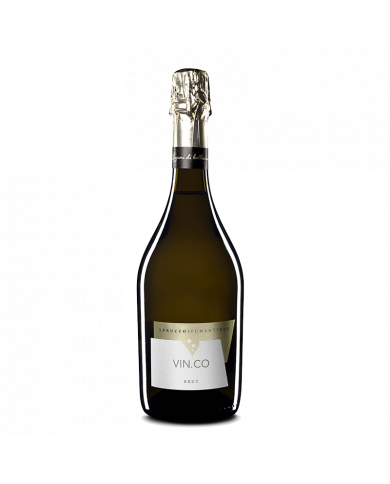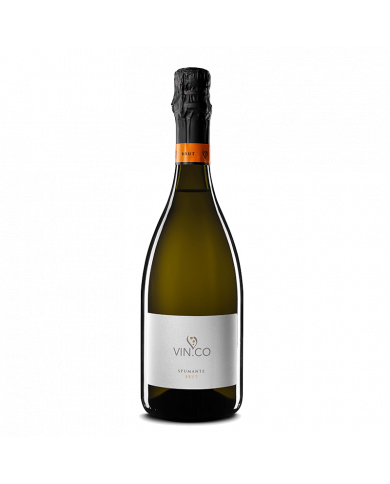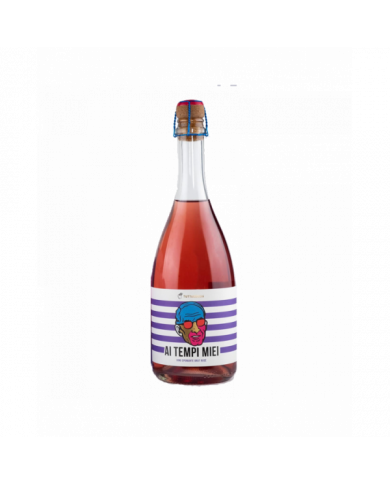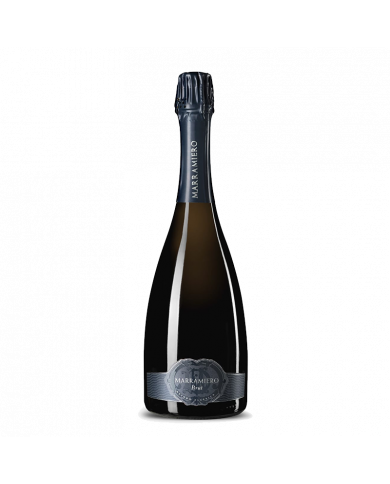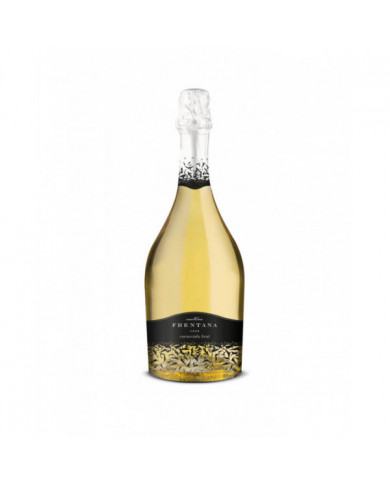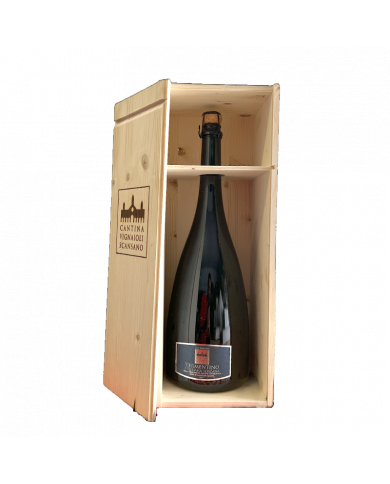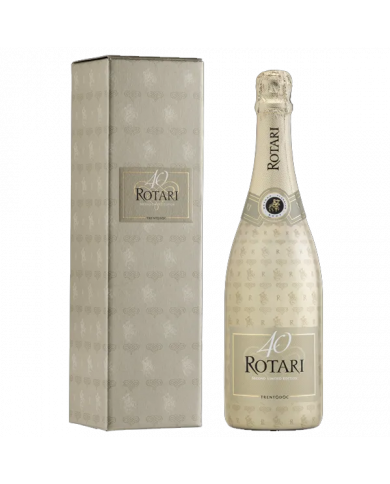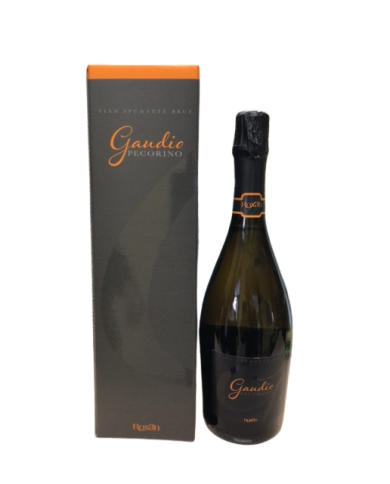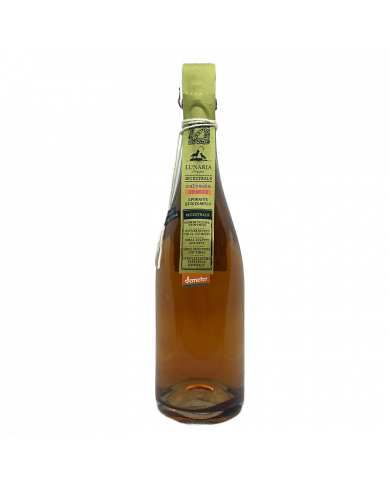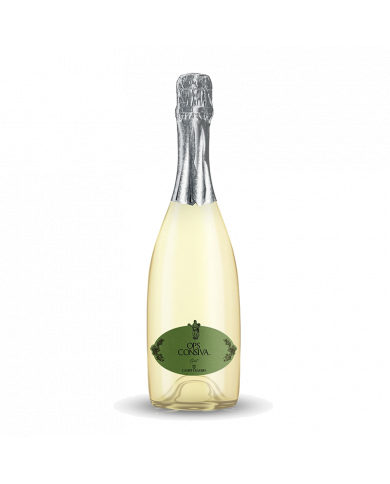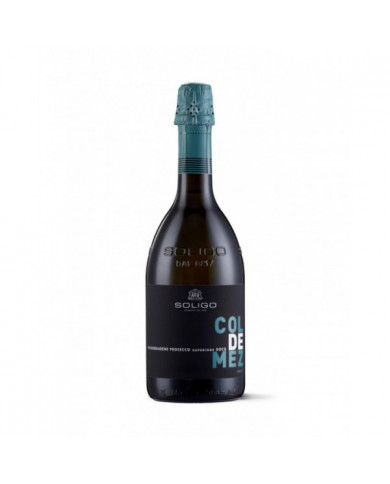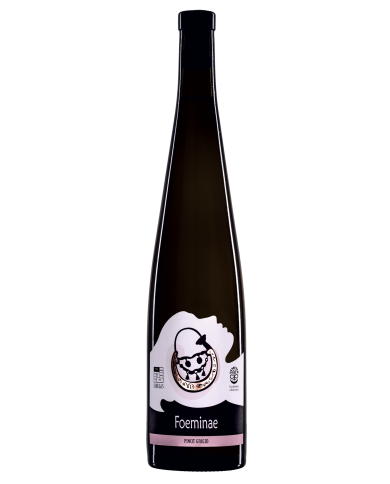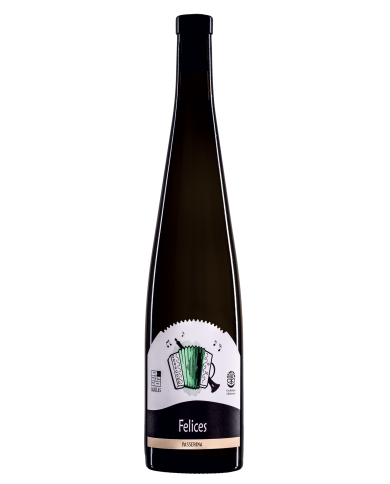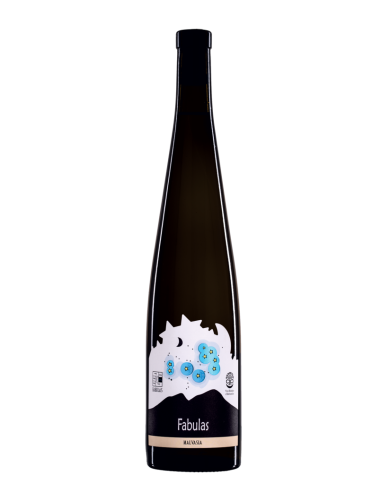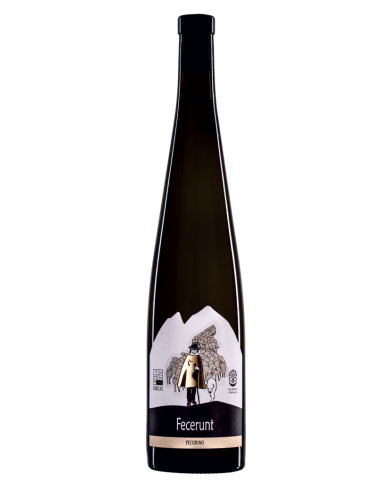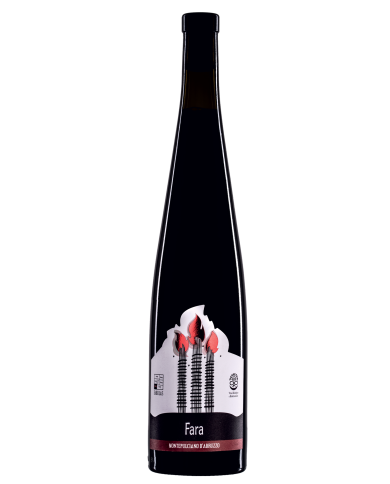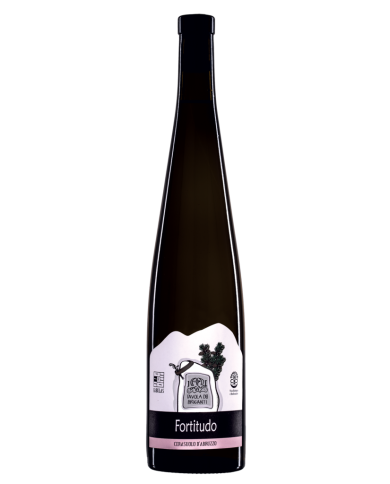In 1895, Federico Martinotti patented his method for the second fermentation of a sparkling wine in a closed container. From the fermentation in autoclave, which enhances the fruity and floral notes, our Abruzzo Spumante Bianco Brut is born today.
In 1895, Federico Martinotti patented his method for the second fermentation of a sparkling wine in a closed container. Our sparkling wine Ros├® Brut is born today from fermentation in autoclave, which enhances its fruity and floral notes.
In 1895, Federico Martinotti patented his method for the second fermentation of a sparkling wine in a closed container. From the fermentation in autoclave, which enhances the fruity and floral notes, our White Brut Sparkling Wine is born today.
"IN MY TIME" Tuttacoccia Spumante Brut Ros├® - Passionate Attractive Seductive
From the deep love of a family for their land and for wine, the sparkling wine Marramiero Brut is born. Particular dedication and profound experience accompany every moment of sparkling wine making. The process begins with the selection of Chardonnay and Pinot Noir grapes and continues with the choice of yeasts for refermentation in the bottle. The temperature control allows to prolong the fermentation and obtain a fine and persistent perlage.
This sparkling wine should be served at a temperature of 8-10 ┬░ C; indicated as an aperitif, to accompany fish-based meals, but also fresh and summer dishes such as salads, cheeses, pasta and cold and vegetable-based rice. Few people know that an unusual but perfect match is with pizza.
Cococciola is a rare native Abruzzo vine from the Frentana area, much appreciated for its quality and productivity. After a period of aging in steel at a controlled temperature, this white wine is made sparkling with the method called Martinotti or Charmat, which involves a double fermentation in an autoclave. The result is a Spumante Brut ideal to accompany your special occasions.
Second limited edition for Rotari 40. It is a special, unique product, dosed with a liqueur d'exp├®dition made according to the Cellar's ancient recipe. A Blanc de Blancs, that is to say a 100% Classic Method, obtained with the best Chardonnay grapes selected in our hillside vineyards north of Trento. In fact, here we find unique climatic conditions: the calcareous soil of dolomitic origin, the average altitude of about 400 meters slm and the excellent exposure to the sun. The vineyards are also caressed by a refreshing alpine breeze which allows the natural preservation of the crunchiness and aromatic intensity of the grapes. Thanks to the combination of all these factors, Rotari 40 releases unique organoleptic characteristics and intense aromas. The 2013 vintage was excellent. It was the latest vintage in the last 20 years, allowing the grapes to ripen in late September: the temperature range gave the grapes freshness and crunchiness, giving a particular liveliness to the sparkling bases, all to the advantage of the longevity of the product.
Second limited edition for Rotari 40. It is a special, unique product, dosed with a liqueur d'exp├®dition made according to the Cellar's ancient recipe. A Blanc de Blancs, that is to say a 100% Classic Method, obtained with the best Chardonnay grapes selected in our hillside vineyards north of Trento. In fact, here we find unique climatic conditions: the calcareous soil of dolomitic origin, the average altitude of about 400 meters slm and the excellent exposure to the sun. The vineyards are also caressed by a refreshing alpine breeze which allows the natural preservation of the crunchiness and aromatic intensity of the grapes. Thanks to the combination of all these factors, Rotari 40 releases unique organoleptic characteristics and intense aromas. The 2013 vintage was excellent. It was the latest vintage in the last 20 years, allowing the grapes to ripen in late September: the temperature range gave the grapes freshness and crunchiness, giving a particular liveliness to the sparkling bases, all to the advantage of the longevity of the product.
It is a brut sparkling wine with a wide and persistent froth, fine and continuous perlage, a light straw color. The aroma is intense and balanced finesse. The full flavor expresses the typicality of the production area.
From the deep love of a family for their land and for wine, the sparkling wine Marramiero Brut is born. Particular dedication and profound experience accompany every moment of sparkling wine making. The process begins with the selection of Chardonnay and Pinot Noir grapes and continues with the choice of yeasts for refermentation in the bottle. The temperature control allows to prolong the fermentation and obtain a fine and persistent perlage.
Intense and persistent nose with balsamic notes of sage and thyme and floral hints of acacia.
Excellent as an aperitif, ideal for appetizers based on fish, crustaceans, molluscs and white meats.
Rose Spumante Brut is a Charmat method also known as ŌĆ£MartinottiŌĆØ. It has a drinkable, lively character capable at the same time of retaining its elegance
Pecorino Spumante Brut is a Charmat method also known as "Martinotti". It has intense aromas of white pulp fruit
Passerina Spumante Brut is a Charmat method also known as ŌĆ£MartinottiŌĆØ. Passerina has a notable hint of minerality on the palate.
Sparkling wine from 100% Falanghina grapes, harvested around the first half of September in the Sannio Beneventano area.
This sparkling wine celebrates the fiftieth year of the foundation of the cooperative. A charmat method from native white berried grapes that stands out for its freshness and for the citrus and vegetable notes brought by the vines as a dowry.
It recently arrived and has already received various awards, including the Gilbert & Gaillard 2021 Gold Medal. This DOC sparkling wine comes from the union of Glera and Pinot Noir grapes. Both have been grown for generations in our area. The harvest of the two varieties takes place at different times. The maturation of the Pinot Noir is reached at the end of August while the Glera is ready to be harvested after the second half of September. The grapes are therefore vinified separately. Only afterwards is the blend between the two base wines carried out and thanks to the activity of the selected yeasts does a slow refermentation take place in an autoclave (Martinotti method - Charmat sparkling process) during which the base wine becomes sparkling and is then left to mature on the lees for at least 60 days. The delicate soft pink color is given by the skins of Pinot Noir grapes rich in pigments called anthocyanins. The aromatic bouquet, on the other hand, arises from the union of the two varieties: the hints of small red fruits from the Pinot Noir and the descriptors of white-fleshed fruit such as pear and apple come from the Glera bunches. In this way we obtain a sparkling wine suitable for numerous occasions and in great demand all over the world. Perfect for a romantic dinner or a summer aperitif with friends.ŌĆŗŌĆŗŌĆŗŌĆŗŌĆŗŌĆŗ
Brut Sparkling Wines: A Complete Guide to Italian Sparkling Wines
Bubbles have always been associated with celebrations and special moments. Brut sparkling wines are one of the most loved and widespread types in Italy. In this comprehensive guide, we'll explore everything there is to know about Brut sparkling wines , from their production, tastes and pairings, to the best labels available on the market.
What is a Brut Sparkling Wine?
Brut sparkling wine is a sparkling wine characterized by a low amount of residual sugar. The term "Brut" refers to the level of sweetness of the wine, and in this case, indicates that the wine is dry, with less than 12 grams of residual sugar per litre. This makes it a very popular choice for those who prefer less sweet and more refreshing wines.
Method of Production
Brut sparkling wines are mainly produced using two methods: Classic Method and Charmat Method.
Classic method
The Classic Method is also known as the Traditional Method or Champenoise Method and is the method used to produce Champagne. In this process, the base wine ferments a second time in the bottle, creating natural bubbles and enriching the aromas and flavours. It is a long and complex method, but the result is a wine of great elegance and structure.
Charmat method
The Charmat Method, also known as the Italian Method, is a faster and more efficient process. The base wine ferments a second time in large stainless steel tanks, maintaining the freshness and fruitiness of the wine. This method is often used for younger and lighter sparkling wines.
Characteristics of Brut Sparkling Wines
Brut sparkling wines have several characteristics that make them unique and distinctive:
Lively acidity
The Bruts have a lively acidity that makes them fresh and inviting on the palate. This acidity balances out the lack of sweetness, creating a harmonious balance.
Fruity aromas
Brut sparkling wines offer a wide range of fruity aromas, such as green apple, citrus and white peach. These fresh and fruity aromas make these wines ideal as an aperitif or as an accompaniment to light dishes.
Fine and persistent bubbles
The bubbles of Brut sparkling wines are fine and persistent, creating a pleasant sensation of fizz in the mouth.
Versatility in Pairings
Thanks to their acidity and structure, Brut sparkling wines go well with a wide range of foods, from seafood to white meats, and are also perfect to be enjoyed alone in moments of celebration.
The Best Labels of Italian Brut Sparkling Wines
Italy boasts a large selection of sparkling Brut wines , produced in different regions of the country. Here are some of the best labels to try:
1. Ferrari Trento Brut
Produced in Alto Adige, Ferrari Trento Brut is one of the most renowned Italian sparkling wines. With its notes of green apple and bread crust, it is an elegant and refined wine.
2. Ca' del Bosco Cuv├®e Prestige Brut
From Lombardy comes the Ca' del Bosco Cuv├®e Prestige Brut, a structured and complex wine with aromas of citrus and yeast.
3. Berlucchi '61 Franciacorta Brut
Berlucchi '61 Franciacorta Brut is another unmissable Italian sparkling wine. With its freshness and creaminess, it is perfect for any occasion.
4. La Gioiosa Prosecco Superiore Brut
If you prefer a lighter option, the La Gioiosa Prosecco Superiore Brut from the Veneto region is an ideal choice. Delicate and aromatic, it is perfect for a cheerful toast.
The History of Brut Sparkling Wines
The tradition of sparkling wines in Italy has ancient roots and has its origins in ancient Rome. However, the success of Brut sparkling wines as we know them today is mainly linked to the Champagne region of France, where the Classic Method took hold in the 17th century. Since then, this style of production has spread throughout Italy, resulting in the delicious Brut sparkling wines that we love and appreciate today.
How to Store and Serve Brut Sparkling Wines
To fully enjoy the bubbles of Brut sparkling wines , it is essential to store and serve them correctly.
storage
Store Brut sparkling wines in a cool, dark place, away from direct sunlight and heat sources. Avoid sudden changes in temperature and keep them horizontal to keep the cap moist.
Service
To serve Brut sparkling wine at the right temperature, chill it in the refrigerator for at least two hours before opening it. The ideal serving temperature is between 6┬░C and 8┬░C. Pour the wine by tilting the glass at 45 degrees to preserve the bubbles as much as possible.
Brut sparkling wines represent the charm and elegance of Italian bubbles. With their lively acidity, fruity aromas and fine bubbles, they are a perfect choice for any celebration and special moment. Explore the vast selection of labels available and delight your guests with the refined taste of Brut sparkling wines .
Frequent questions
What is the difference between a Brut sparkling wine and an Extra Dry sparkling wine?
The main difference lies in the level of sweetness. A Brut sparkling wine is dry, while an Extra Dry is slightly sweeter.
How long does a bottle of Brut sparkling wine keep?
Most Brut sparkling wines are best kept for about 2-3 years from the date of production. However, some of them can age even better.
What are the main grape varieties used to produce Italian Brut sparkling wines?
Among the most used grape varieties are Chardonnay, Pinot Noir and Pinot Blanc, but there are many other regional varieties that are used.
Can I combine a Brut sparkling wine with a plate of red meat?
Yes, but it's better to opt for a more structured and complex Brut, like a Franciacorta or a Trentodoc.
What makes Italy such a renowned region for the production of sparkling wines?
Italy has a variety of terroirs and microclimates which allow for the cultivation of different grapes suitable for the production of high quality sparkling wines. The country's long winemaking tradition has also contributed to the development of refined production techniques.


